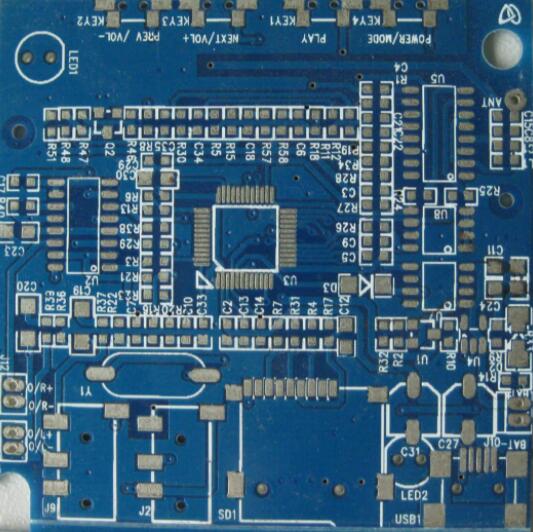Why the single-ended impedance on the PCB controls 50 ohms
Many people who are new to impedance will have this question. Why do common single-ended wiring on the PCB board are controlled by 50 ohms instead of 40 ohms or 60 ohms by default? This is a seemingly simple question that is not easy to answer. Before writing this article, we also searched for a lot of information. The most well-known one is Howard Johnson, Ph.D.'s response to this question. I believe many people have read it.
Why is it difficult to answer? The signal integrity problem itself is a question of trade-offs, so the most famous sentence in the industry is: "It depends..." This is a question where there is no standard answer, and the benevolent sees the benevolent and the wise sees the wisdom. Today, Mr. Expressway will briefly summarize this question by combining various answers. This is also an introduction. I hope that more people can summarize more relevant factors from their own perspectives.

First of all, 50 ohms has a certain historical origin, which has to start with standard cables. We all know that a large part of modern electronic technology is derived from the military, and slowly turned from military use to civilian use. In the early days of microwave application, during the Second World War, the choice of impedance was completely dependent on the needs of use. With the advancement of technology, impedance standards need to be given in order to strike a balance between economy and convenience. In the United States, the most commonly used conduit is connected by existing rods and water pipes. 51.5 ohms is very common, but the adapters/converters seen and used are 50 ohms to 51.5 ohms; it is a solution for the joint army and navy. For these problems, an organization named JAN was established, which was later DESC, which was specially developed by MIL. After comprehensive consideration, 50 ohms was finally selected, and special conduits were manufactured and transformed into various cables. standard. At this time, the European standard was 60 ohms. Soon after, under the influence of companies that dominate the industry like Hewlett-Packard, Europeans were also forced to change, so 50 ohms eventually became a standard in the industry. It has become a convention, and the PCB connected to various cables is ultimately required to comply with the 50 ohm impedance standard for impedance matching.
Secondly, from the perspective of processing achievable, 50 ohm PCB is more convenient to achieve. From the foregoing impedance calculation formula, it can be seen that too low impedance requires a wider line width and a thin medium (or a larger dielectric constant), which is more difficult to meet in space for current high-density boards; too high impedance requires a higher Thin line width and thicker dielectric (or smaller dielectric constant) are not conducive to the suppression of EMI and crosstalk. At the same time, the reliability of processing for multi-layer boards and from the perspective of mass production will be relatively poor; and 50 Ohm's ordinary line width and dielectric thickness (4~6mil) in the environment of commonly used materials meet the design requirements (the impedance calculation in the figure below), and it is easy to process, and it is not surprising that it slowly becomes the default choice.
Third, from the perspective of loss, according to basic physics, it can be proved that the 50 ohm impedance skin effect loss is the smallest (taken from Howard Johnson, PhD's reply). Generally, the skin effect loss of the cable L (in decibels) is proportional to the total skin effect resistance R (unit length) divided by the characteristic impedance Z0. The total skin effect resistance R is the sum of the resistance of the shielding layer and the intermediate conductor. The skin effect resistance of the shielding layer is inversely proportional to its diameter d2 at high frequencies. The skin effect resistance of the inner conductor of the coaxial cable is inversely proportional to its diameter d1 at high frequencies. The total series resistance R is therefore proportional to (1/d2+1/d1). Combining these factors, given d2 and the corresponding dielectric constant Er of the isolation material, the following formula can be used to minimize the skin effect loss.
PCB is very happy to be your business partner. Our business goal is to become the most professional prototyping PCB manufacturer in the world. With more than ten years of experience in this field, we are committed to meeting the needs of customers from different industries in terms of quality, delivery, cost-effectiveness and any other demanding requirements. As one of the most experienced PCB manufacturers and SMT assemblers in China, we are proud to be your best business partner and good friend in all aspects of your PCB needs. We strive to make your research and development work easy and worry-free.
quality assurance
iPCB has passed ISO9001:2008, ISO14001, UL, CQC and other quality management system certifications, and produces standardized and qualified PCB products. We master complex process skills and use professional equipment such as AOI and Flying Probe to control production, X-ray inspection machines, etc. . Finally, we will use double FQC inspection of appearance to ensure shipment under IPC II standard or IPC III standard.